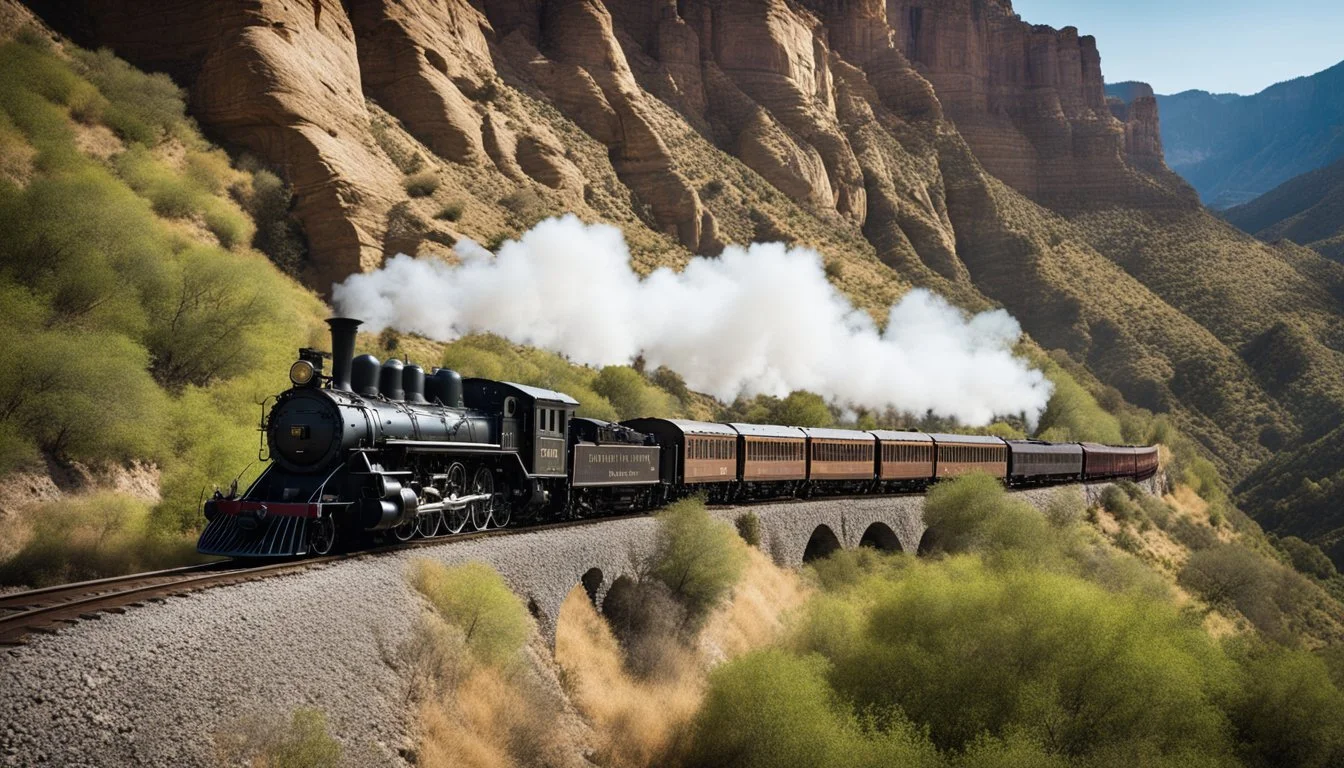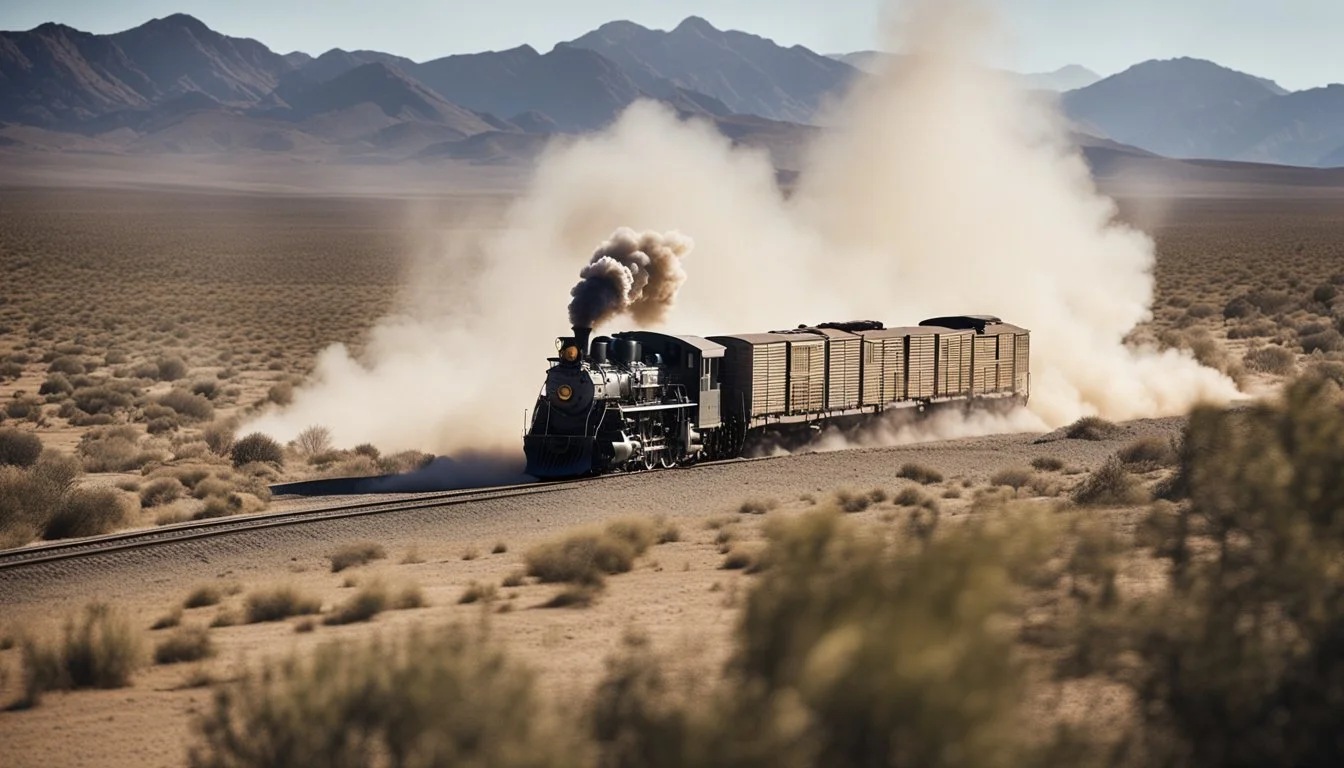3 Flat Nose George Curry Documentaries: The Train Robber's Tale Unveiled
Wild West Outlaw's Life Explored
George "Flat Nose" Curry was a notorious Canadian-American outlaw who made his mark on the American Old West in the late 19th century. As a member of Butch Cassidy's Wild Bunch, Curry participated in numerous train and bank robberies across the western United States. His life of crime and daring exploits have captured the imagination of historians and filmmakers alike, leading to the creation of several documentaries that explore his fascinating story.
These documentaries delve into Curry's background, his criminal career, and his relationships with other infamous outlaws of the era. They shed light on the motivations and circumstances that led Curry to a life outside the law, as well as the eventual consequences of his actions. By examining primary sources and expert analyses, these films offer viewers a glimpse into a tumultuous period of American history and the larger-than-life figures who shaped it.
1) "The Wild Bunch: Flat Nose George's Daring Heists" by History Hub (2021)
"The Wild Bunch: Flat Nose George's Daring Heists" explores the audacious exploits of George Curry and his gang of outlaws. The documentary delves into Curry's notorious career as a train robber in the American West during the late 19th century.
Featuring interviews with historians and archival footage, the film reconstructs key events in Curry's life. It examines his early days as a cowboy and his transition into a life of crime.
The documentary highlights Curry's most famous heists, including the Great Northern train robbery of 1897. It also explores his partnerships with other infamous outlaws like Kid Curry and Butch Cassidy.
"The Wild Bunch" provides insight into the law enforcement efforts to capture Curry and his gang. The film examines the techniques used by lawmen to track and apprehend the elusive outlaws.
The documentary concludes with Curry's eventual capture and death in 1900. It reflects on his legacy and impact on the mythology of the American West.
More information on George Curry
2) "Train Robbers: The Notorious Flat Nose George" documentary series
"Train Robbers: The Notorious Flat Nose George" is a three-part documentary series that explores the life and crimes of George Curry. The series premiered in 2020 on a popular streaming platform.
Each episode focuses on a different aspect of Curry's infamous career. The first installment examines his early life and entry into the world of train robbery.
Episode two delves into Curry's most daring heists and his rise to notoriety in the American West. It features interviews with historians and crime experts who provide context for his actions.
The final episode covers Curry's eventual capture and the legacy he left behind. It also explores how his story has been portrayed in popular culture over the years.
The series uses a mix of historical reenactments, archival footage, and expert commentary to bring Curry's tale to life. It aims to present a balanced view of the outlaw's life and times.
"Train Robbers: The Notorious Flat Nose George" received positive reviews for its thorough research and engaging storytelling. Critics praised its ability to separate fact from legend in Curry's story.
More information on the documentary series
3) "Flat Nose George Curry: Outlaw Chronicles" by True Crime Investigates (2018)
This documentary film explores the life and crimes of George "Flat Nose" Curry, a notorious train robber active in the American West during the late 19th century. The production delves into Curry's background and his rise to infamy as a member of the Wild Bunch gang.
The film features interviews with historians and crime experts who provide insights into Curry's criminal career. It examines his involvement in several high-profile train robberies and his relationships with other famous outlaws of the era.
"Flat Nose George Curry: Outlaw Chronicles" uses archival photographs and reenactments to bring Curry's story to life. The documentary also explores the law enforcement efforts to capture Curry and his fellow gang members.
The film discusses Curry's eventual demise and the legacy he left behind in Western outlaw lore. It offers a balanced perspective on the romanticized image of train robbers in popular culture versus the harsh realities of their criminal activities.
More information on George "Flat Nose" Curry
Background of Flat Nose George Curry
George Sutherland Currie, known as "Flat Nose" George Curry, was a Canadian-American outlaw who became a prominent member of the Wild Bunch gang. His life of crime in the American Old West left a lasting mark on the era of train and bank robberies.
Early Life and Influences
George Curry was born on March 20, 1871, on Prince Edward Island, Canada. His family relocated to Nebraska when he was young, exposing him to the rugged frontier lifestyle. At 15, Curry ventured westward, drawn by the allure of the untamed territories.
The harsh realities of frontier life shaped Curry's path. He quickly became involved in cattle rustling, a common criminal activity in the region. This early exposure to outlaw culture set the stage for his future exploits.
Criminal Career Beginnings
Curry's criminal career took off when he met Harvey Logan, who would later adopt the Curry surname. The two formed a partnership, focusing on bank robberies. Their successful heists caught the attention of more established outlaws.
Their notoriety led to an invitation to join Butch Cassidy's Wild Bunch. This association elevated Curry's status in the criminal underworld. He participated in train robberies and other high-profile crimes with the gang.
Curry's expertise in planning and executing robberies made him a valuable asset to the Wild Bunch. His criminal activities spanned several states in the American West. However, his career was cut short on April 17, 1900, when he was killed by a sheriff while rustling cattle in Grand County, Utah.
The Train Robberies
Flat Nose George Curry participated in several daring train heists as part of the Wild Bunch gang. These robberies demonstrated the gang's audacity and skill while posing significant challenges for law enforcement.
Infamous Heists and Their Impact
On July 14, 1898, Curry joined Sundance Kid and Harvey Logan in robbing a Southern Pacific train near Humboldt, Nevada. The trio made off with only $450, a relatively small haul.
A more lucrative heist occurred on June 2, 1899, when the Wild Bunch targeted a Union Pacific Railroad overland flyer near Wilcox, Wyoming. This robbery netted a much larger sum and solidified the gang's reputation.
These train robberies disrupted railroad operations and caused financial losses for the companies involved. They also captured public attention, with newspapers eagerly reporting on the exploits of the Wild Bunch.
Law Enforcement Pursuits
The train robberies sparked intense efforts by law enforcement to track down the perpetrators. Detectives meticulously traced serial numbers on stolen banknotes to identify the culprits.
After each heist, the gang would split up to evade capture. Curry, along with Sundance Kid and Logan, often retreated to their hideout at Hole in the Wall.
Local sheriffs and federal agents pursued the outlaws across state lines. The gang's ability to disappear into remote areas made the chase particularly challenging.
Flat Nose George Curry's luck eventually ran out. He met his end at the hands of a sheriff while rustling cattle in Grand County, Utah in 1900.
Capture and Aftermath
George "Flat Nose" Curry's criminal career ended abruptly in 1900. His capture and subsequent events shaped how he would be remembered in Western outlaw lore.
Trial and Sentencing
On April 17, 1900, Sheriff Jesse Tyler confronted Curry near Moab, Utah. A shootout ensued, resulting in Curry's death. The sheriff had tracked him down after reports of cattle rustling in the area. Curry, who had been laying low after previous train robberies, was caught off guard. No trial or sentencing took place due to his death at the scene.
The news of Curry's demise spread quickly through outlaw circles and law enforcement agencies. His death marked the beginning of the end for the Wild Bunch, as other members soon faced similar fates or fled the country.
Legacy and Cultural Representation
Curry's exploits and distinctive appearance left a lasting mark on Old West history. His nickname "Flat Nose" became legendary, stemming from an injury that flattened his nose. This feature made him easily recognizable and added to his notoriety.
In popular culture, Curry has been portrayed in various films and books about the Wild Bunch. His role as a mentor to Harvey Logan, who adopted the Curry surname, is often highlighted. Western enthusiasts continue to study his life, piecing together facts from historical records and separating myth from reality.
Museums in Wyoming and Utah sometimes feature exhibits on Curry and the Wild Bunch, preserving artifacts and sharing stories of their infamous deeds.






